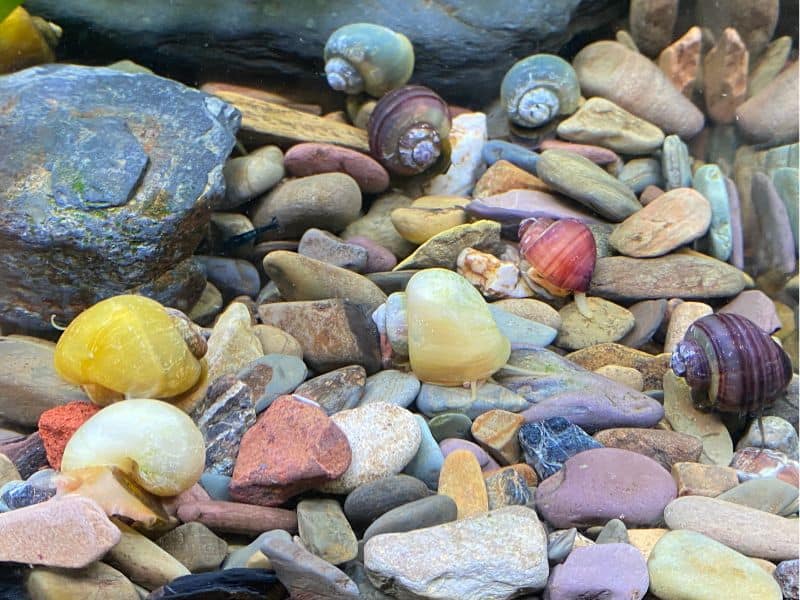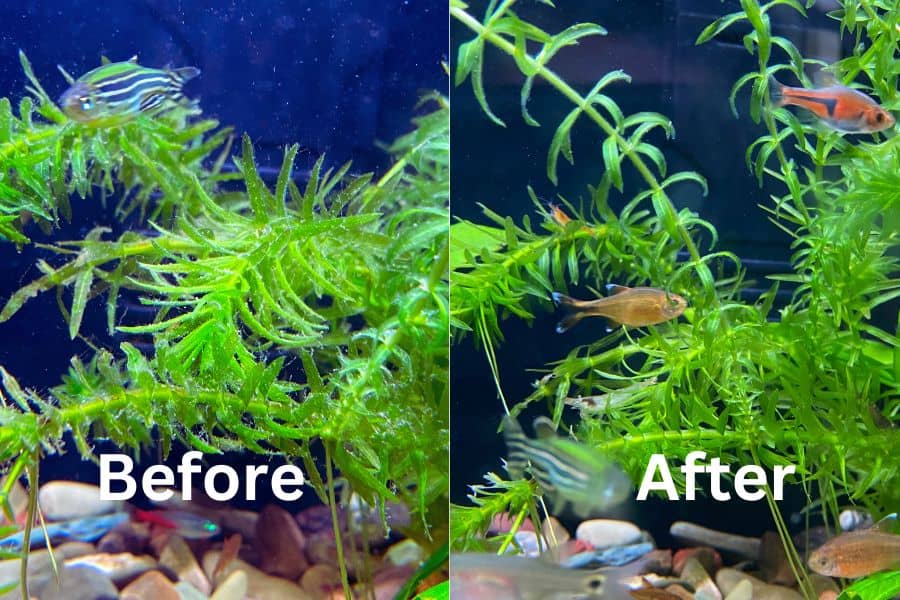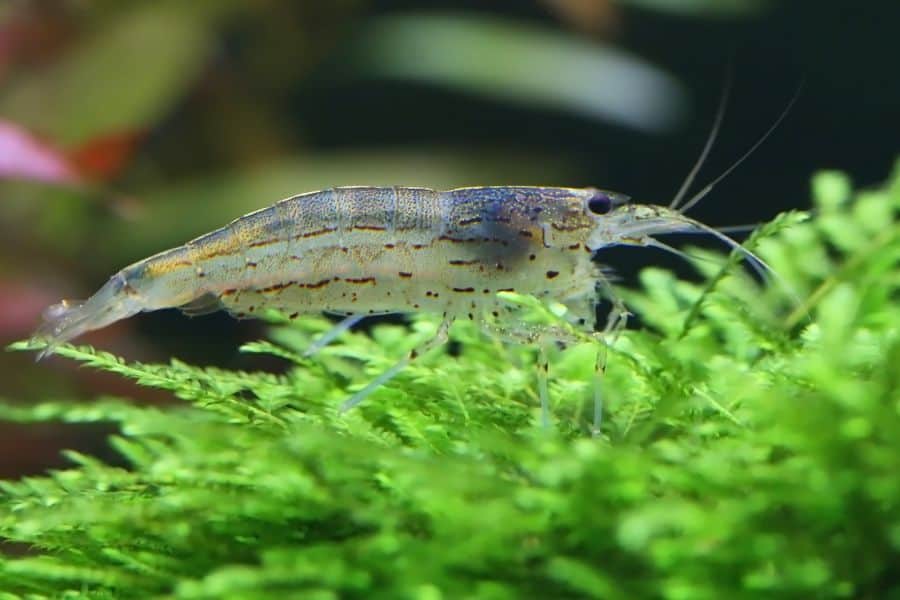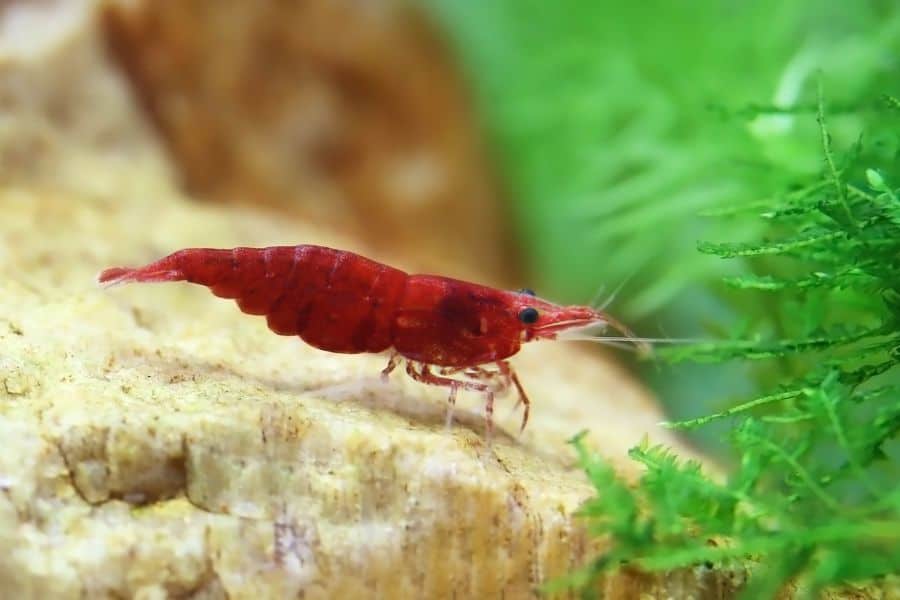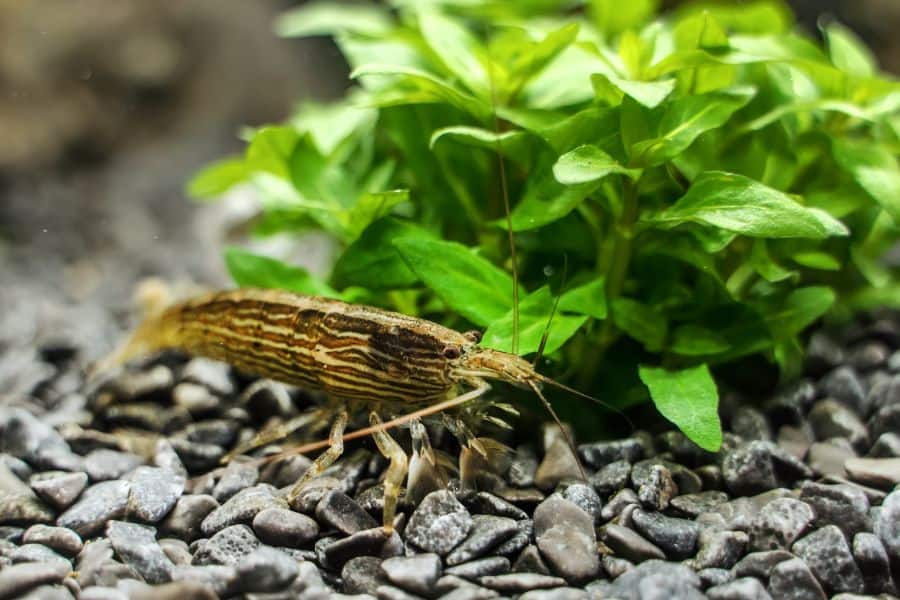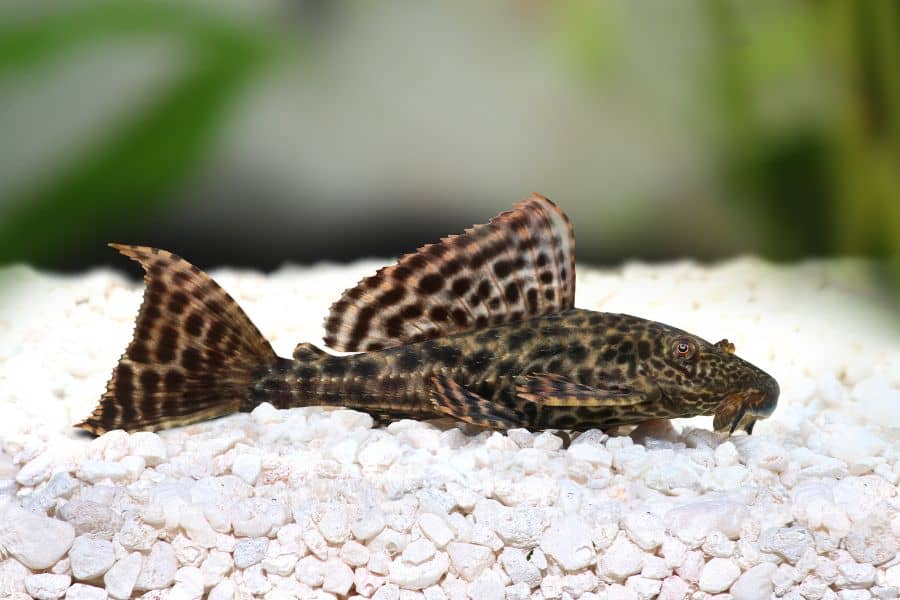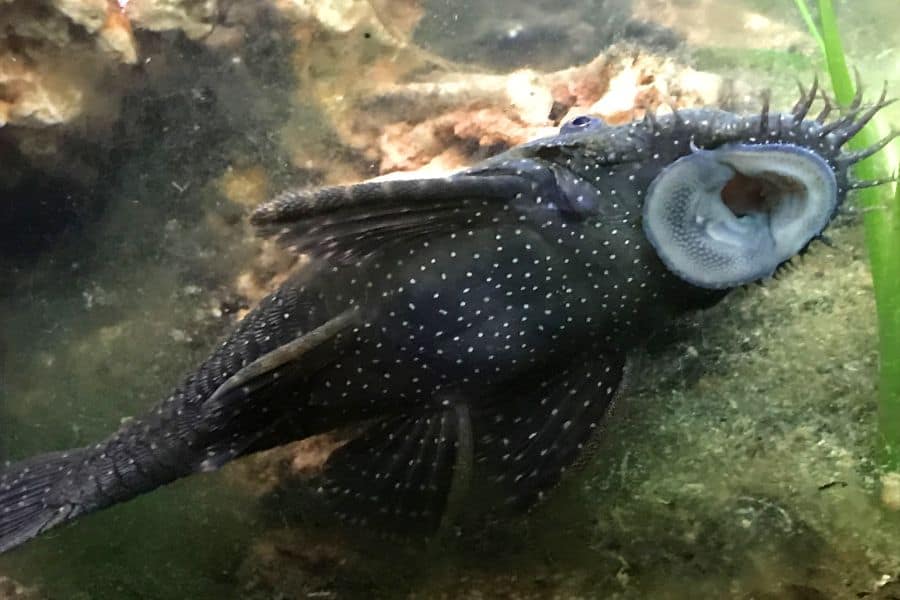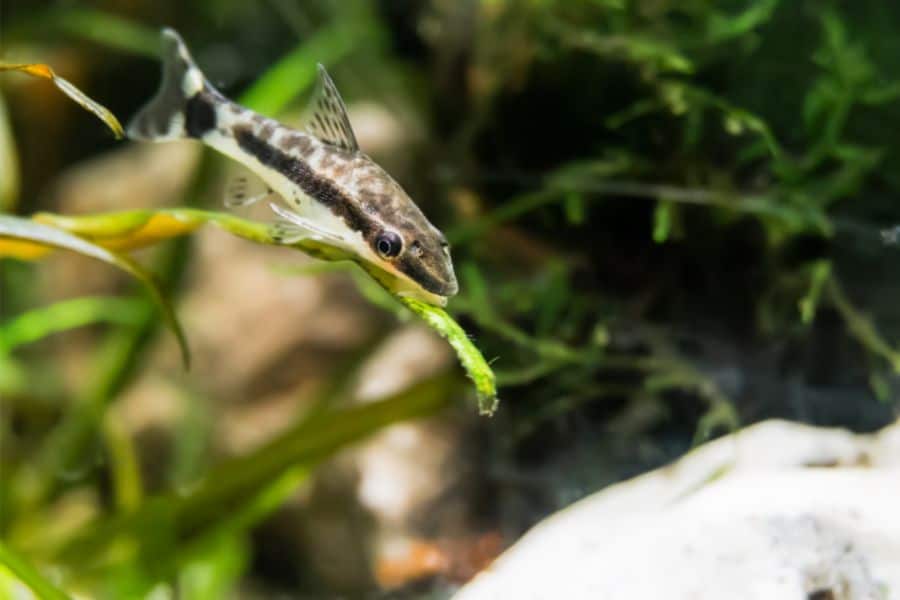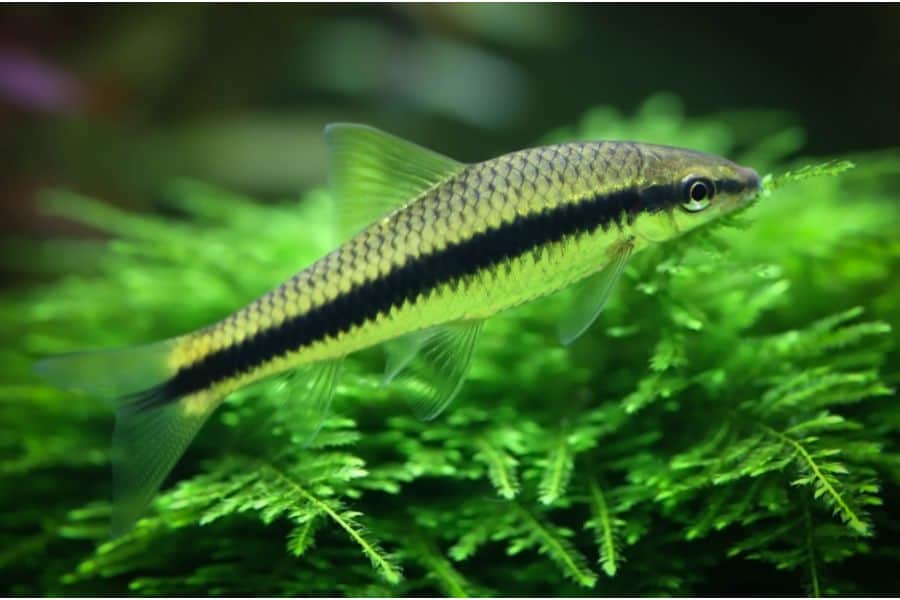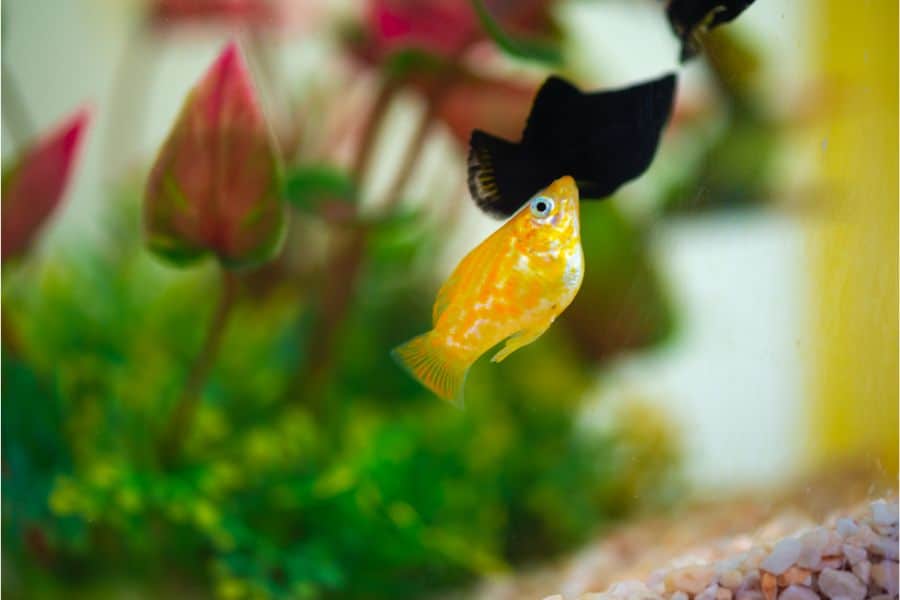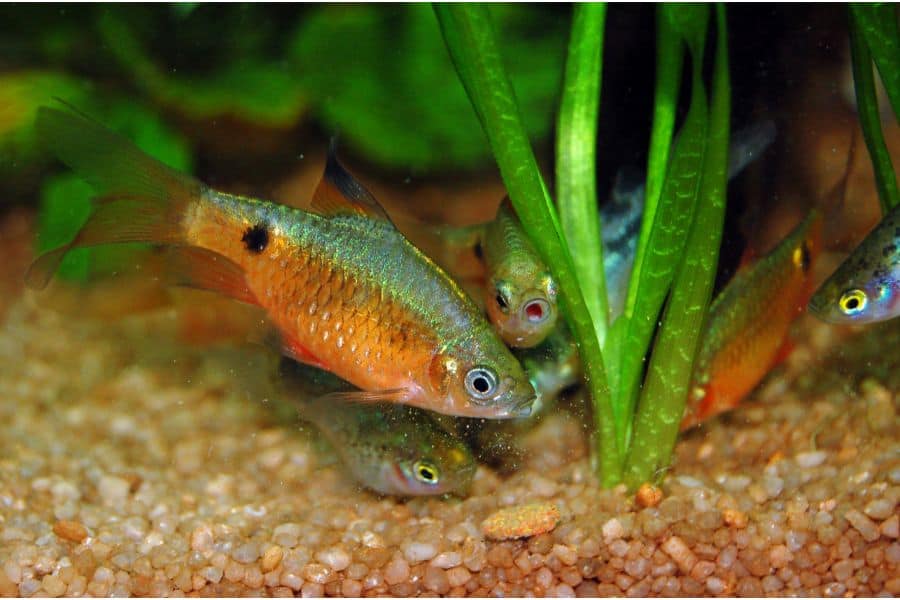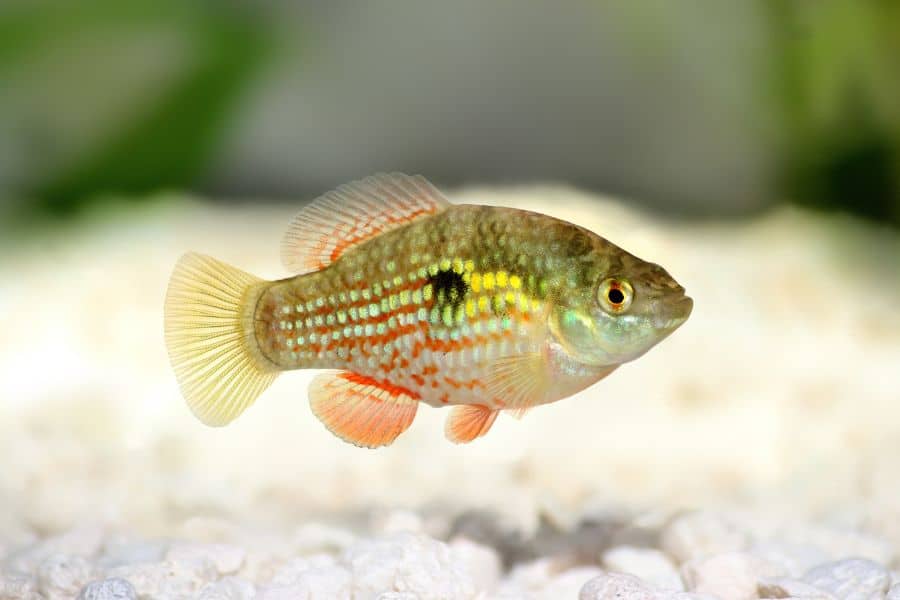A small number of algae growing in your tank is typical. However, with conditions like stagnant water, excessive lighting, and other factors of poor water quality, you can expect algae to grow and infest your tank.
It may be too late if the population of algae is in full bloom. Aside from causing massive mortality, total water change and general clean-up may be your course of action. Doing this requires a lot of time and effort.
But why do the cleaning yourself if your aquarium pets can do it for you beforehand?
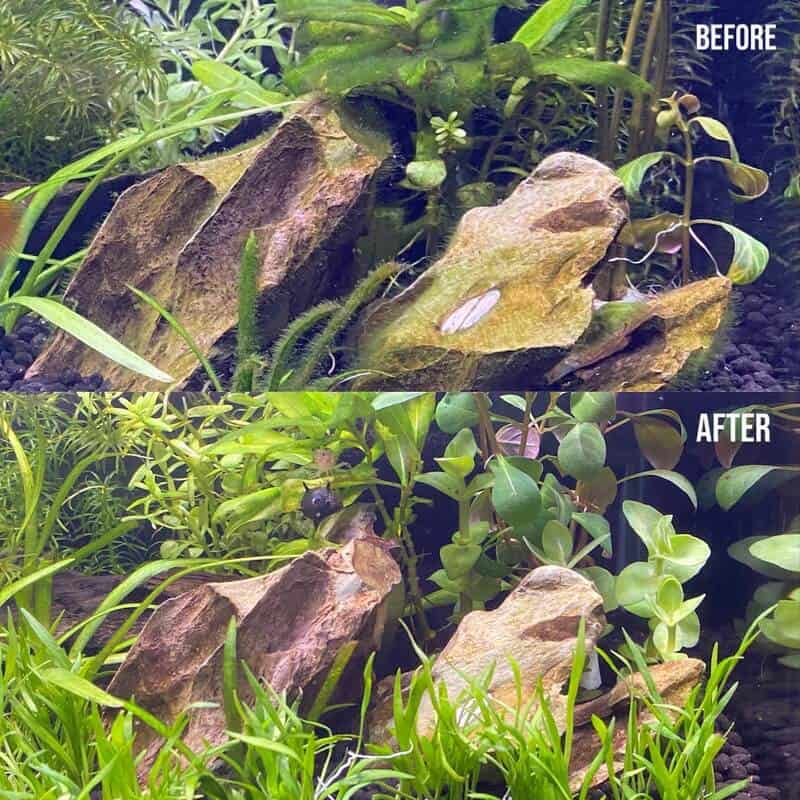
Aquarium pets (like fish, shrimp, and snails) are bred not just to please your eyes and increase the aesthetic value of your tank. Ecologically, they serve a purpose.
Although not all, some of their species are algae-eaters. It gives them the natural ability to control an algae outbreak and prevent algae blooms from occurring.
Join us in this article as we present the best algae eaters used in the aquarium industry and hobbyists alike.
Snails
Most of us bred snails in our tank because of their peaceful sluggish behavior and the aesthetic contribution of their colorful shell. On top of this, you should be aware that snails are detritus feeders. They feed on anything found on the substrate.
Aside from dead plants and leftover feeds, snails eat algae. It is part of their diet. Even if they are slow-moving, these gastropods are fast in consuming algae as they passively devour food as they crawl.
The mechanism for feeding in snails is through a flexible network of microscopic teeth called a radula. This radula scrapes off food from any surface and takes it in towards the mouth.
Here are the best algae-eating snails.
Nerite Snails
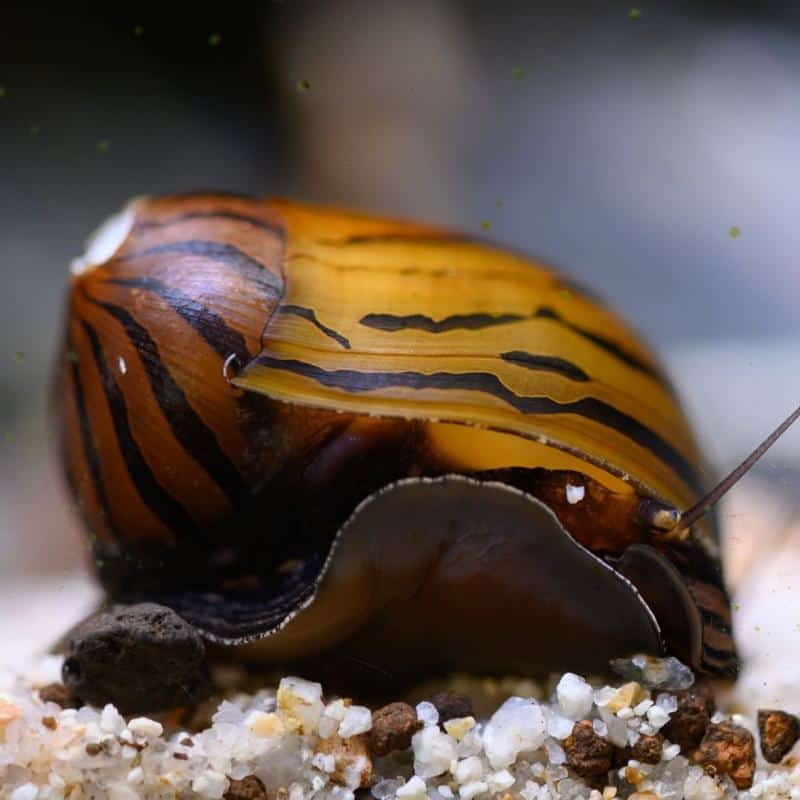
These snails are a large taxonomic group under the Neritidae family. Some of them are saltwater, brackish water, and freshwater snails. While there are several species of nerite snails, the most commonly bred for the aquarium trade are:
| Species | Habitat |
| Nerita spp. | Saltwater |
| Neritina spp. | Saltwater and Freshwater |
| Clithon spp. | Brackish Water and Freshwater |
| Vittina spp. | Brackish Water and Freshwater |
Despite their differences in shell color, they are small (2cm) and have a solid circular shell with a spiral cord design.
Being small, they can scrape off algae growing in hard-to-reach areas like driftwood and aesthetic decor. Moreover, they have a voracious appetite for green spot algae firmly on the surface.
Amongst the snail family, Nerite snails are the best algae eaters. To control rapid algae growth in a 20-gallon tank, you only need four snails.
Fun fact. Did you know that the eggs of nerite snails will not hatch in freshwater? Their sesame seed-shaped eggs will only hatch if salinity reaches 5ppt.
Malaysian Trumpet Snail(Melanoides tuberculata)
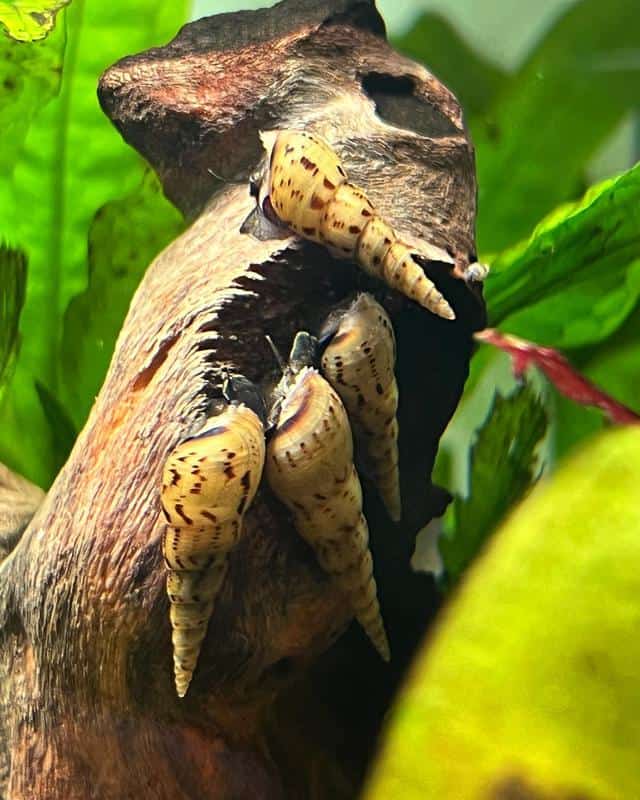
Also called the Red-rimmed Melania Snail, this trumpet-shaped gastropod is ideal for brackish water and freshwater tanks. While they have a long-elongated shell, they are tiny algae-eating snails and grow under an inch in length.
They specialize in eating soft filamentous algae, especially those loosely attached to a surface.
Fun fact. Although Malaysian Trumpet Snails don’t feed on live plants, they still have the potential to damage your aquatic flora, but uniquely. They have this plowing behavior in searching for food and may uproot shallow-rooted plants.
Mystery Snails(Pomacea bridgesii)
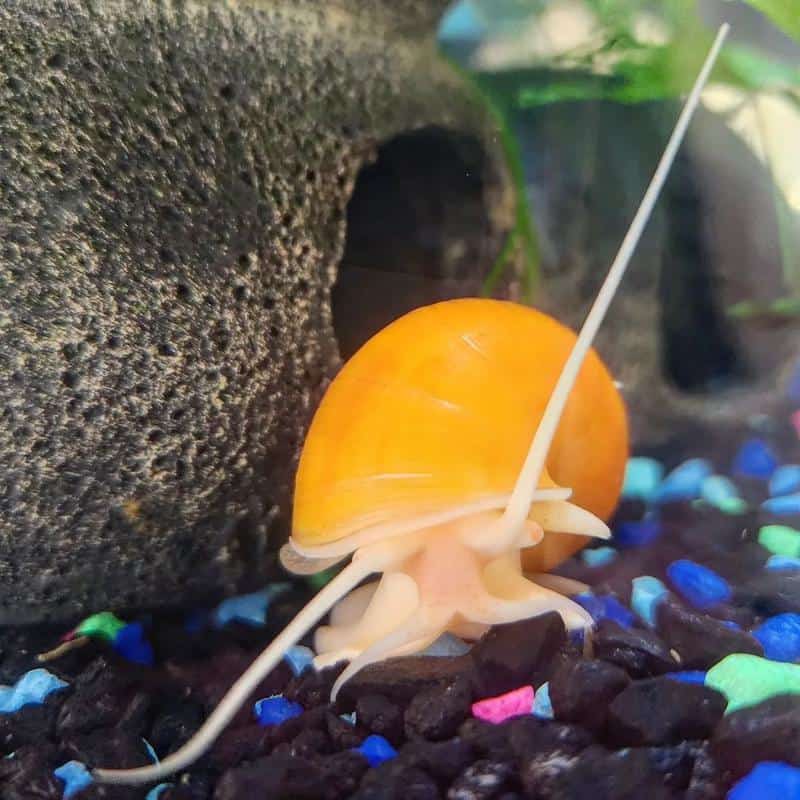
These yellow-colored gastropods are ideal for warm freshwater tanks. They specialize in eating algae that are growing in the glass and the substrate.
With their voracious appetite for algae, you need to be aware that they feed on algae growing on live plants. They may damage your aquatic flora. So, to prevent them from damaging your live plants, especially when algae growth is minimal, you need to feed them with supplemental food as wafer feeds.
Fun fact. Did you know that most mystery snails sold in the market are juveniles? Also known as the Spiketop Applesnail, don’t be surprised if they grow large like a tennis ball since they can reach up to 65mm in diameter.
Shrimps
As a scavenger, bottom crawler, and with two pairs of walking legs modified into a claw (periopods) for grabbing food, shrimps are considered one of the best algae eaters.
Except for fish poop, they eat anything like leftover feeds, dead plants, and dead animals settled at the bottom. Algae are a big part of their diet. They are known to consume brush algae, string algae, and hair algae.
What sets them apart from other algae eaters is their ability to consume the dreaded black beard algae.
A typical feeding behavior of shrimps is they focus on one area before moving around in search of another feeding ground. Once they have found a feeding ground, feeding will commence immediately. Using their periopods, they cut off tiny algae filaments and held them toward their mouth.
Unlike the passive feeding behavior of snails, shrimps are active feeders. The only downside for shrimps is they only eat algae when hungry. To maintain its constant starvation, feeding with supplemental food is discouraged.
Amano Shrimp(Caridina multidentata)
Holding the number 1 seat, Amano shrimp is the best algae-eating shrimp. Aside from having a voracious appetite, they are not picky. They consume any type of algae, including the notorious black beard algae.
Amano shrimp is perfect for tanks with lots of hiding places and restricted passages. Most of the algae eaters stay in the wide-open space of the substrate. But Amano shrimps, with their tiny and elongated body (5cm), can penetrate and grab algae growing in narrow passages.
A good thing about Amano shrimp is that they are tolerant to changes in water parameters. Also, they are not expensive when compared to other algae eaters.
Fun fact. Did you know that a single breeding cycle for Amano shrimps would take six months? While adult Amano shrimps are raised in freshwater tanks, their eggs will not hatch in such conditions. Amano shrimp eggs will only hatch in saltwater, and the baby shrimps (called shrimplets) are released alive.
Cherry Shrimp (Neocaridina davidi)
In comparison, a single cherry shrimp is not as effective as the algae consumption of a single Amano shrimp. However, with the way we value their aesthetic contribution to the tank and stocking them in larger quantities, their total algae consumption would match those from a few Amano shrimp.
Cherry shrimps are brightly colored aquarium pets. While their wild origins are transparent and greenish-brown in color, selective breeding has resulted in varieties of colors from red, orange, yellow, green, blue, and striped.
We know we got your attention when we mentioned large quantities. Yes, that’s the practice to attain and match their algae-consuming abilities with Amano shrimp. However, you don’t just stock and load your tank with lots of cherry shrimp.
The ideal stocking density is three shrimps per liter. In this way, you give them enough space to grow and mature. If you follow this stocking density, you will soon see baby cherry shrimps. They multiply fast, and their breeding cycle is short.
Bamboo Shrimp(Atyopsis moluccensis)
This medium-sized shrimp that can grow up to 10cm was not taken care of in the tank to consume algae. They were bred for their unique color pattern mimicking bamboo, timber, or wood.
However, as they are traded globally and have been a staple in the US and European aquarium industries, their algae-eating abilities have been observed.
Since they are relatively larger compared to other species of shrimps, they usually occupy elevated surfaces. It makes them ideal for controlling algae, particularly in tanks with large rocks and cobblestones.
Although large, they are peaceful. They do great in a community tank and are ideal for raising together with small-sized fish. If well taken care of, they can live for six years.
Ghost Shrimp(Paleomonetes paludosus)
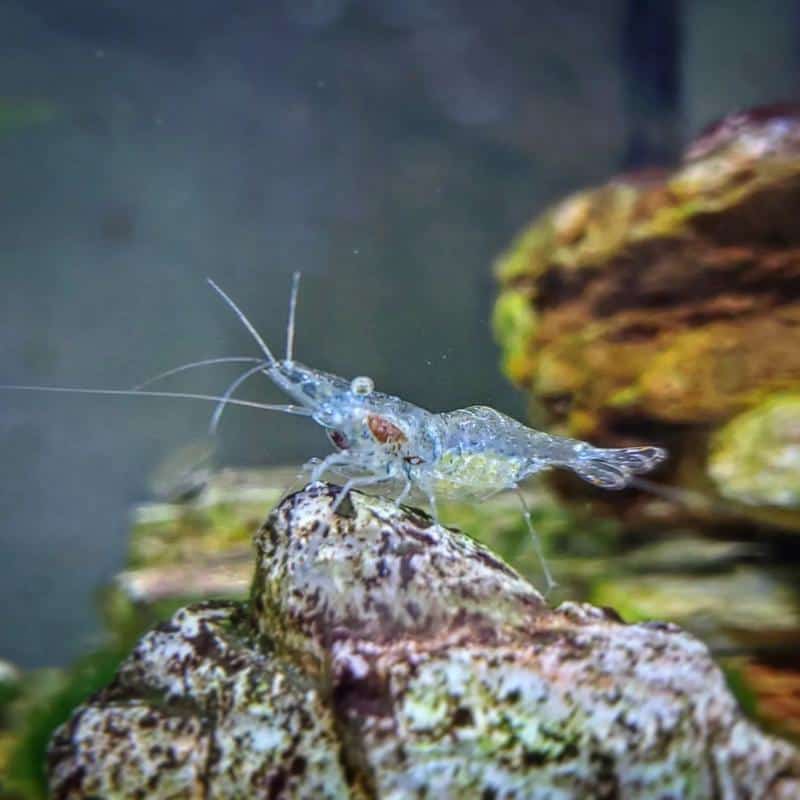
If you want to add species to your tank that still consumes algae, consider having a ghost shrimp. Although they are not as effective as Amano shrimp or cherry shrimp, their presence will surely complement the shrimp’s overall algae-eating efficiency.
They are not brightly colored. Their name was derived from their transparent shell color that looks like a ghost. You can use this characteristic to your advantage by making it an indicator of health conditions.
Since you can see through, you can monitor if bacteria and parasites are growing in their body, like the nematode Scutariella japonica. If your ghost shrimp is infected, other shrimps can also be infected.
Fish
Who would ever think that fish are algae-eaters?
Although most of the global fish population is carnivorous, some are omnivores (eat both plants and animals) and herbivores that exclusively feed on plants like algae.
In our list of the best algae-eating fish, you will see that the structure and position of their mouth play a vital role in their success as top-rated algae eaters.
Suckermouth Catfish(Hypostomus plecostomus)
Also known as the common pleco, the suckermouth catfish is undisputedly the most popular algae-eating fish. Even kids are familiar with them since they cling to the tank glass and get the attention of our kiddos.
Along with other species of plecos, the suckermouth catfish has an inferior mouth. When they feed and scrape off algae, their mouth creates a suction effect. It is the reason why they stick to glass and other surfaces.
Fun fact. Did you know that a suckermouth catfish can survive out of the water for up to 30 hours? Together with other pleco species, they can breathe in air. They go to the surface and gulp in the air when dissolved oxygen is low.
Bristlenose Plecostomus(Ancistrus temminckii)
Growing long (5 inches or 13 cm), a Bristlenose Plecos is the perfect algae-eating fish for a 25-gallon tank.
They function and look similar to your common pleco. However, as their name suggests, the only difference is they have bushy appendages (that look like bristles) extending out of their snout.
Surprisingly, their bristles are not sensory and are not used in the food search. Instead, their bristle is part of their camouflage defense mechanism as they mimic a dead plant when not moving.
Fun fact. Did you know that the bristles are only prominent in adult males? Adult females have clean faces.
Otocinclus Catfish (Otocinclusspp)
With over 22 species and an average growth of 2 inches (5 cm), Otocinclus catfish are also called dwarf suckers.
Similarly to pleco, they have an inferior mouth that creates a suction effect when feeding. It is why they are attached to the glass, a live plant, or any surface. However, when they sense danger (like the presence of a predator), they use their fast-swimming skills and take cover.
Otocinclus catfish are omnivores. They prefer to eat plant material, like soft green algae. Their small and slender bodies are perfect for cleaning hard-to-reach areas, especially those flat and narrow passages prone to diatom algae growth.
Also Read: Aquarium Catfish Types
Reticulated Hillstream Loach(Sewellia lineolata)
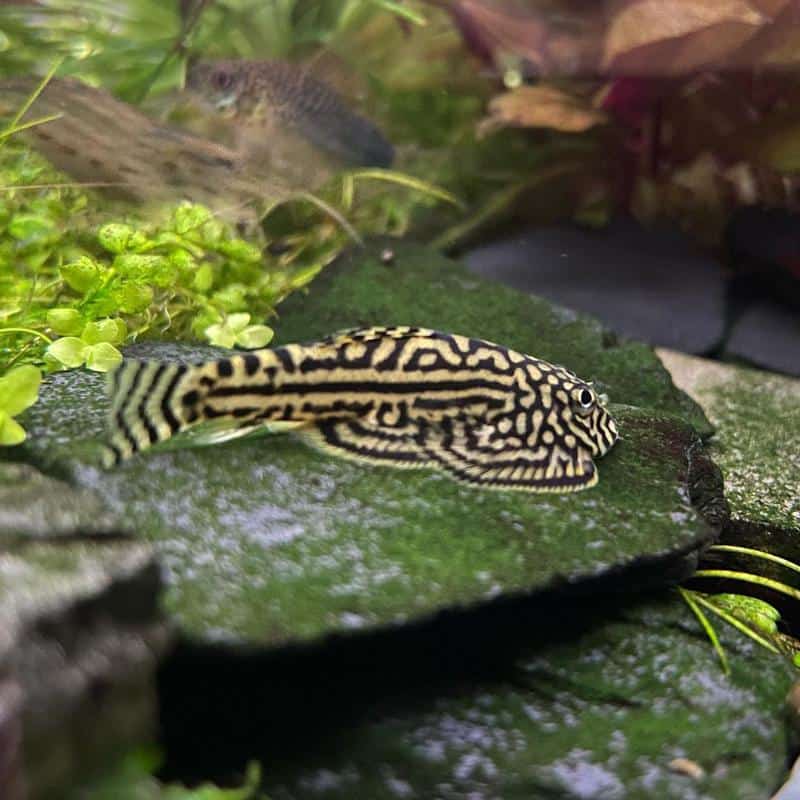
If you want an algae-eating fish that increases the aesthetic value of your tank, then consider having a reticulated hillstream loach.
Naturally born to swim against the current, this algae-eating fish prefers to clean areas near filters, air stones, and other types of filtration and aeration systems. When they feed along running -water, they spread out their fin like small stingrays.
The only downside for this fish is their territorial behavior, which may be defensive, even to their fellow species. Keeping this in mind, you need to limit their quantity, preferably three loaches for a 25-gallon tank.
Fun fact: Although looking like plecos, a reticulated hillstream loach is more related to a carp than a catfish.
Siamese Algae Eater(Crossocheilus oblongus)
Belonging to the omnivorous carp family, the siamese algae eater is one of the most effective algae-eating species. This effectiveness has something to do with their mouth.
Siamese algae eater has a mouth that is inferior and funnel-shaped. When feeding, their funnel-shaped mouth will profuse out. It allows food to be sucked in.
Moreover, their mouths have rostral barbels. They act as taste receptors and aid them in targeting certain food items. It is why they prefer to eat hair algae and black beard algae.
The only downside for this algae-eating fish is that they also love to eat live plants.
Fun fact: Siamese algae eaters are different from Chinese algae eaters. Aside from growing up to 10 inches (25 cm), Chinese algae eaters are not effective in controlling algae growth as they tend to be lazy once they grow big and reach maturity. It is the reason why we don’t include them in our list.
Molly Fish(Poecilia sphenops)
Mollies are one of the most popular aquarium fish traded globally. While they are bred selectively in a variety of body colors, they still maintain their flat mouth. It is their main asset in consuming algae.
Mollies are omnivores, and they are not picky eaters. When algae start to grow on any surface, they eat it by nibbling on small bites. A single molly can effectively control unwanted algae growth in a 20-gallon tank.
While algae are not the sole food preference of mollies, there is a trick for them to be effective algae eaters. Do not give commercial feeds. Once they go hungry, you can see their algae-eating prowess put to work.
Related: How Long Do Mollies Live?
Rosy Barb(Pethia conchonius)
Aside from being aggressive, Rosy barbs are known for their ease of care. But do you also know that they eat algae?
Rosy barbs are omnivores. They can munch on worms, and insects and graze on algae. They love to consume hair algae and thread algae.
While aggression is associated with this species, you can still keep them in the tank as an algae-eating fish. The trick is to stock them in schools of 10 fish per 20-gallon tank.
Fun fact. Did you know that the color of rosy barbs becomes more luminous during mating?
Florida Flagfish(Jordanella floridae)
This fish is known for two things. First, they are known for their unique body color. The red stripes look similar to an American flag. Second, they are known for their algae-eating capabilities. And not just as any fish, but a voracious consumer of algae.
The Florida flagfish consumes almost all types of algae, like brown algae, hair algae, blanket-weed algae, and black beard algae.
Fun fact. Did you know that, of all the algae-eaters on our list, only the Florida flagfish holds a Guinness World Record? They hold the world record for having the fewest egg. Only 20 eggs are released every breeding cycle.
Read More:
- Brown Hair Algae: How To Manage Them?
- How to Get Rid of Algae in the Fish Tank?
- How to Treat White Algae in Your Fish Tank?
- Aquarium Fish that Eats Poop
- Best Fish that Clean Tanks
- Best Saltwater Algae Eaters
- Why Is My Fish Tank Cloudy?
Conclusion
Our list of the best algae eaters is long and quite overwhelming. But it doesn’t mean you put all the species mentioned here in a single tank. The key to having an effective control mechanism is to select the appropriate algae eater for your tank.
Do not use the wrong type of algae eater. Otherwise, if you do so, expect algae will continue to grow and flourish.
You also remember that these algae eaters are living organisms. They require certain conditions to survive.
Lastly, the unwanted growth of algae does not rely on the effectiveness of the algae eaters. Certain conditions allow the prolific growth of algae, like poor water quality, excessive lighting, and stagnant water.
If you address these factors, plus the addition of algae eaters, expect a clean and healthy tank, which is, the true meaning of tank aesthetics.
